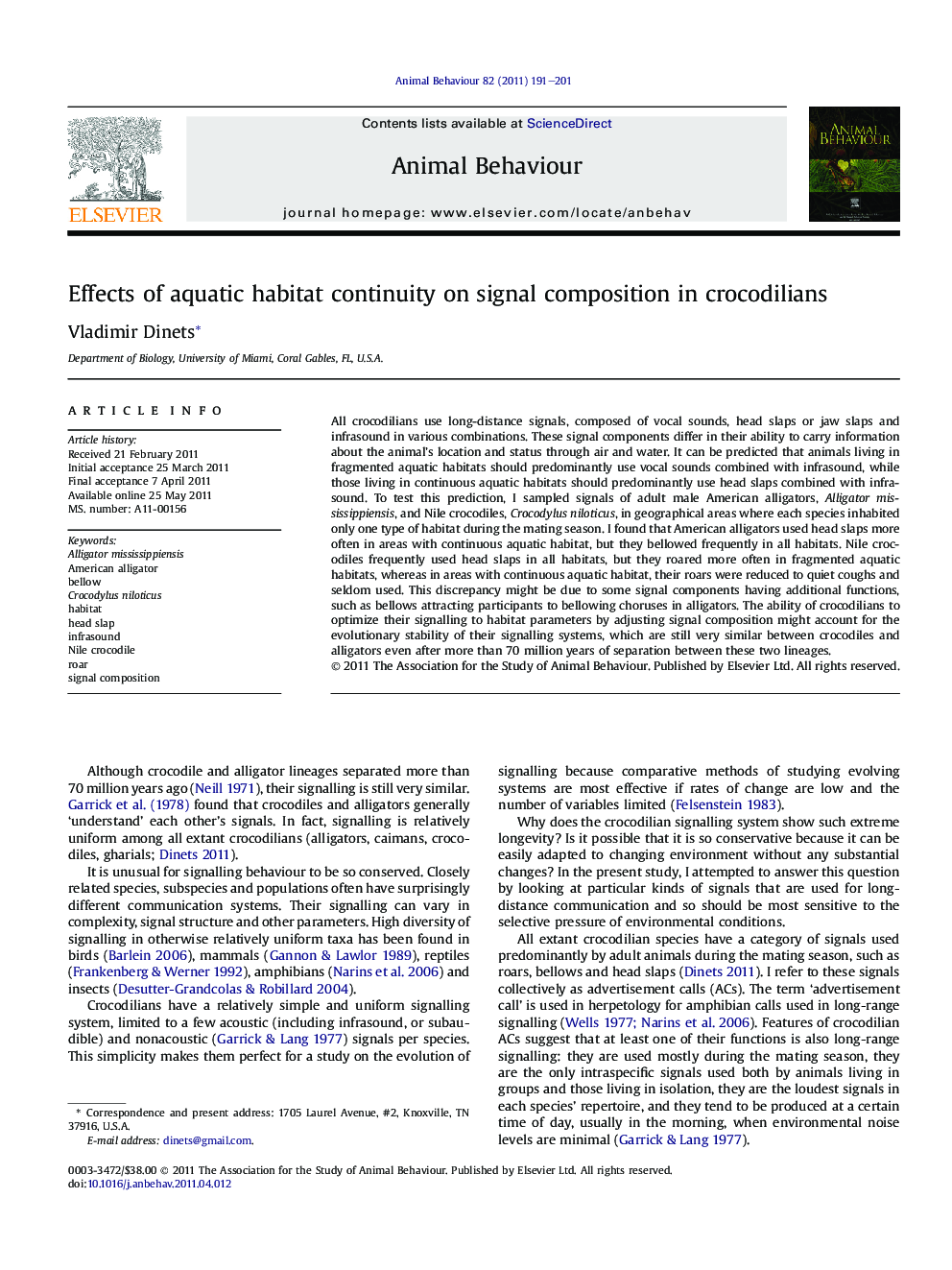| Article ID | Journal | Published Year | Pages | File Type |
|---|---|---|---|---|
| 2416986 | Animal Behaviour | 2011 | 11 Pages |
All crocodilians use long-distance signals, composed of vocal sounds, head slaps or jaw slaps and infrasound in various combinations. These signal components differ in their ability to carry information about the animal’s location and status through air and water. It can be predicted that animals living in fragmented aquatic habitats should predominantly use vocal sounds combined with infrasound, while those living in continuous aquatic habitats should predominantly use head slaps combined with infrasound. To test this prediction, I sampled signals of adult male American alligators, Alligator mississippiensis, and Nile crocodiles, Crocodylus niloticus, in geographical areas where each species inhabited only one type of habitat during the mating season. I found that American alligators used head slaps more often in areas with continuous aquatic habitat, but they bellowed frequently in all habitats. Nile crocodiles frequently used head slaps in all habitats, but they roared more often in fragmented aquatic habitats, whereas in areas with continuous aquatic habitat, their roars were reduced to quiet coughs and seldom used. This discrepancy might be due to some signal components having additional functions, such as bellows attracting participants to bellowing choruses in alligators. The ability of crocodilians to optimize their signalling to habitat parameters by adjusting signal composition might account for the evolutionary stability of their signalling systems, which are still very similar between crocodiles and alligators even after more than 70 million years of separation between these two lineages.
